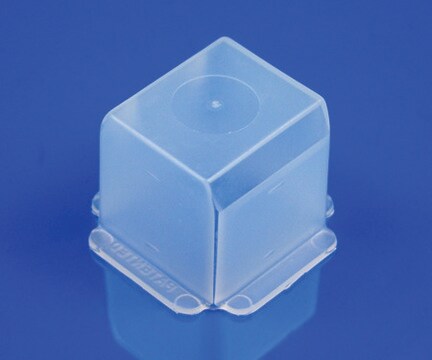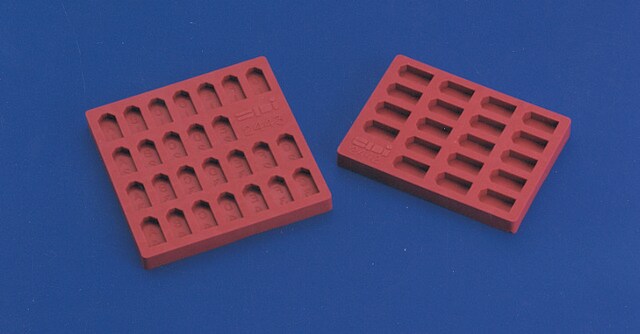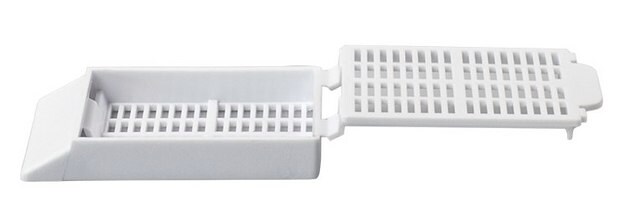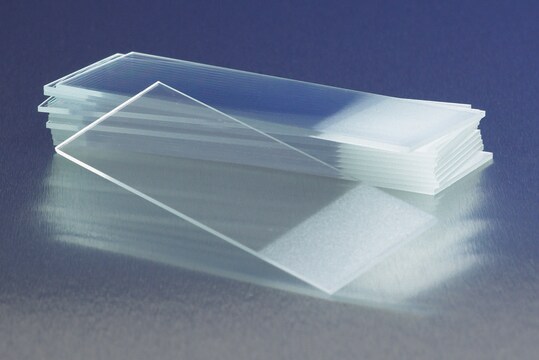SHH0026
PolyFreeze Tissue Freezing Medium
clear
Synonyme(s) :
support matrix for tissue sectioning
Se connecterpour consulter vos tarifs contractuels et ceux de votre entreprise/organisme
About This Item
Code UNSPSC :
12171500
Nomenclature NACRES :
NA.47
Produits recommandés
Couleur
clear
Application(s)
hematology
histology
Température de stockage
room temp
Vous recherchez des produits similaires ? Visite Guide de comparaison des produits
Description générale
Tissue samples may be snap frozen using PolyFreeze with isopentane and liquid nitrogen, dry ice (slush/slurry or bunker), or in a cryostat.
PolyFreeze media do not cause autofluorescence and can easily be washed away during tissue fixation when rinsed prior to staining. Once rinsed off the slide, there is no trace of the support matrix to interfere with staining or immunohistochemistry (IHC) reactions.
Standard frozen sections at 3–6 μm are easy to obtain and mount on glass slides for drying and/or fixation prior to staining, while thicker sections can be taken as required. Sections will flow freely under an anti-roll device, allowing flat sections to be picked up from the knife-edge. Sections can be either fixed immediately in the fixative of choice or air dried for later fixation and staining. Drying or fixing the slides in the cryostat for specific procedures will not affect the PolyFreeze medium.
um are easy to obtain and mount on glass slides for drying and/or fixation prior to staining, while thicker sections can be taken as required. Sections will flow freely under an anti-roll device, allowing flat sections to be picked up from the knife-edge. Sections can be either fixed immediately in the fixative of choice or air dried for later fixation and staining. Drying or fixing the slides in the cryostat for specific procedures will not affect the PolyFreeze medium.
PolyFreeze media do not cause autofluorescence and can easily be washed away during tissue fixation when rinsed prior to staining. Once rinsed off the slide, there is no trace of the support matrix to interfere with staining or immunohistochemistry (IHC) reactions.
Standard frozen sections at 3–6 μm are easy to obtain and mount on glass slides for drying and/or fixation prior to staining, while thicker sections can be taken as required. Sections will flow freely under an anti-roll device, allowing flat sections to be picked up from the knife-edge. Sections can be either fixed immediately in the fixative of choice or air dried for later fixation and staining. Drying or fixing the slides in the cryostat for specific procedures will not affect the PolyFreeze medium.
um are easy to obtain and mount on glass slides for drying and/or fixation prior to staining, while thicker sections can be taken as required. Sections will flow freely under an anti-roll device, allowing flat sections to be picked up from the knife-edge. Sections can be either fixed immediately in the fixative of choice or air dried for later fixation and staining. Drying or fixing the slides in the cryostat for specific procedures will not affect the PolyFreeze medium.
Application
A support matrix or form of embedding medium for frozen sectioning. This medium freezes quickly supporting the tissue for sectioning at 3 μ and up with no cracking of the matrix at temperatures from -8 °C to -25 °C. Snap freeze using PolyFreeze with isopentane and liquid nitrogen or dry ice (slush/slurry or bunker). Store specimens frozen in PolyFreeze in liquid nitrogen canisters or in airtight containers in a -80 °C freezer.
Cryo-embedding matrix for frozen specimens.
Cryo-embedding matrix for frozen specimens.
PolyFreeze tissue freezing medium has been used in immunohistochemistry.
PolyFreeze tissue freezing medium has been used in immunohistochemistry.
Caractéristiques et avantages
- Colored PolyFreeze (blue, green, yellow) makes differentiating multiple specimens easy during sectioning and staining
- Experience less curling, less ice artifacts, faster freezing with PolyFreeze
Stockage et stabilité
Store PolyFreeze tissue freezing medium at room temperature. A cloudy appearance of the unfrozen product has no effect on performance.
Store specimens frozen in PolyFreeze medium in liquid nitrogen canisters or in airtight containers in a -80 0C freezer.
Store specimens frozen in PolyFreeze medium in liquid nitrogen canisters or in airtight containers in a -80 0C freezer.
Code de la classe de stockage
10 - Combustible liquids
Classe de danger pour l'eau (WGK)
WGK 1
Point d'éclair (°F)
>230.0 °F
Point d'éclair (°C)
> 110 °C
Faites votre choix parmi les versions les plus récentes :
Déjà en possession de ce produit ?
Retrouvez la documentation relative aux produits que vous avez récemment achetés dans la Bibliothèque de documents.
Les clients ont également consulté
An ex vivo gene therapy approach in X-linked retinoschisis.
Bashar A E, et al.
Molecular Vision, 22, 718-718 (2016)
TGF-β1 and IL-10 expression in epithelial ovarian cancer cell line A2780.
Feng X, et al.
Tropical Journal of Pharmaceutical Research, 14(12), 2179-2185 (2015)
Shweta Kukreja et al.
Developmental biology, 467(1-2), 95-107 (2020-09-14)
The retinotectal system has been extensively studied for investigating the mechanism(s) for topographic map formation. The optic tectum, which is composed of multiple laminae, is the major retino recipient structure in the developing avian brain. Laminar development of the tectum
Notre équipe de scientifiques dispose d'une expérience dans tous les secteurs de la recherche, notamment en sciences de la vie, science des matériaux, synthèse chimique, chromatographie, analyse et dans de nombreux autres domaines..
Contacter notre Service technique









